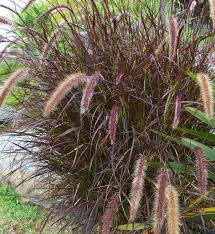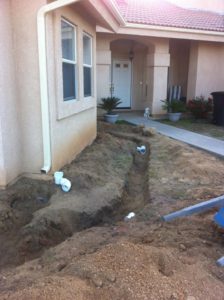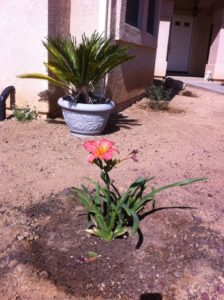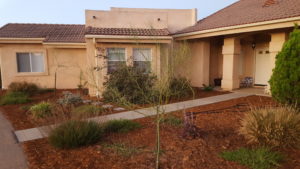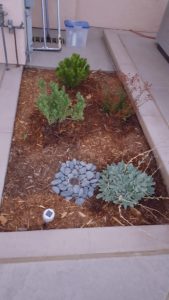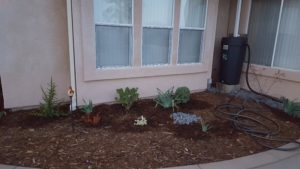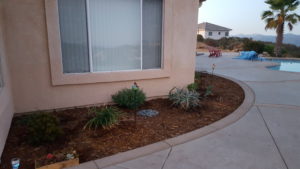Like most of us, I grew up playing with my friends on my parent’s lawn, running through sprinklers in the summer and sustaining injuries on the slip and slide. I think I even remember playing lawn darts a time or two. But alas, we are in the midst of a long drought that requires us to change our habits and our visual landscape.
In southern California drought tolerant landscaping has gone from chic to the norm for commercial property owners, grass beltways and expansive manicured lawns at home a thing of childhood memory. But before you go rushing out to buy that cactus garden, let’s discuss some other options that can add beauty and diversity to your landscape without drowning you in water costs. I hope to show that you don’t need a large amount of landscaping knowledge to make it work for you.
For those of you who have not yet visited Davis Consulting California HQ, let me just tell you it has been a landscaping adventure. This Labor Day weekend we celebrate our 6-year anniversary at this location – there was scarcely a plant alive when we arrived. Our plant inventory consisted of a few scraggly rose bushes, and a few other sickly looking plants in front of the house that hadn’t been watered in months (no irrigation and the house had sat empty for an undetermined period of time). The balance of the 4+ acres of property was wild brush. It would be generous to call the soil anything but rock – digging here takes power tools and lots of determination.
It took a lot of trial and error to figure out what would grow in our soil. Mind you, I have no landscaping training other than what my grandparents taught me. They both had pretty green thumbs, but this is a tough case. We decided right out of the gate we would not have grass at this house – too much water and maintenance. While my husband went to work whacking the jungle of brush from the house, I set to work selecting drought tolerant plants. Yes, I could have just left the jungle – since they were living without water they technically met the criteria, though our homeowner’s insurance company would not have approved. Aesthetically, it was not ideal so onward we go.
Because of my lack of training, I don’t know what most of these plants are called. I recognize these types of plants from all the commercial buildings I see. When I go to the nursery, I just go find some that look familiar and read the tags looking for phrases like “drought tolerant” and “low water usage”. Usually the nursery folks are kind enough to put most of these together for you – go find the cactus then back up a row or two and you are usually there. Yes, my nursery trips can last a long time.
I decided to start with some plants that would attract hummingbirds and butterflies as well as bees, producing colorful flowers and nice looking greenery. Sounds simple right? Well, sort of. There is plenty to choose from – the question is what will grow in your soil, and what will the rabbits eat before it has a chance to take hold. Oh yeah – the rabbits. These adorable little balls of fluff come sneaking into the yard in the middle of the night and eat your new plants, leaving you with nothing but a nub by daybreak. To Home Depot I went to get coated chicken wire to enclose some of the new plantings (DON’T get the rabbit wire – the small ones can still get through the openings. I learned this the hard way!

We decided early on that to make it at our place, a plant would have to be able to live with being watered once a week. If we have extended hot weather we try and fit in a second watering, but otherwise once is it. With no irrigation hand watering is required. Jack hammering up enough rock to run irrigation lines was just too much – we installed only drainage.
Here are some photos of where we started. It took us several weekends of digging and breaking rock to lay the drain pipes.
The beginnings of landscaping!
And some photos of our landscape now.
We also added some planters into the concrete design in the back. Never having done this before, I was unsure of my ability to get it right and hired a landscape designer, which turned out to be a huge mistake, at least for us. The biggest reason we were unhappy was that my husband and I have both worked in commercial construction for many years, and probably have much higher standards than your average homeowner. We ended up ripping out everything they did and re-doing it. I don’t know what came over me – fortunately my husband is a patient man.
We have lost a fair number of plants using this trial and error method, and it has taken years. It would have been more efficient to have it all planned out and get it all done at once instead of in bursts of inspiration, but I have enjoyed the journey. We have learned a lot about our plants, our soil, and our native wildlife. Our landscape is ever changing, and though I miss the green grass expanses of my childhood, I am happy with the natural beauty that surrounds my daily life.

